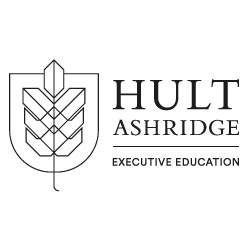- Operations
Aligning Functional Expertise with Strategy
Corporate success depends on how well finance, HR, IT, and marketing align their operational models with strategy
Functional capability is essential. Whether a manager is trained in Finance, HR, IT or Lean, functional skills have become hugely important to organizational success. Take Lean Six Sigma. Since Edwards Deming first extoled its virtues in Japan in 1950, organizations have been finding ways to do more and better with less. Pareto Charts, Spaghetti Diagrams, Process Maps, Root Cause Analyses and associated tools have proved powerful in helping reduce waste, raise standards, improve quality and cut process time.
A similar story can be told in Organization Development, in Financial Control or in IT applications. The functional tools that have been developed over the last fifty years have transformed the work that people do and significantly improved organizational performance. Those who are well trained in their functional disciplines are both fortunate and valuable.
But, functional skills are not enough. More critical to organization success is strategy and the way the organization’s operating model is aligned with the strategy. Functional skills can help ensure that the operating model is executed efficiently and using best practice. But functional skills alone cannot redesign the operating model. It is for this reason, that Malcolm Baldridge Award winners can be underperforming organizations or companies with world leading HR practices can have below average financial results. Without the skills to address alignment issues, functional experts can find themselves improving the deck chair delivery process as the Titanic hits the iceberg.
The solution, we have found at Ashridge Business School, is to train functional experts to understand operating models and how they can be aligned with strategy. Not only can they then directly help improve alignment, but they can also use their functional knowledge to help develop better business strategies.
Strategy can be articulated by defining the desired relationships between an organization and its stakeholders: which stakeholders, what value the organization will deliver to each stakeholder and what the organization expects to get in return from each stakeholder (see exhibit). For example a restaurant has lunch customers, evening customers, chefs, waiters, suppliers of foods, suppliers of IT, landlords, bankers and investors. A restaurant must have a good value proposition for its customers because, without customers, it has no revenues. But, the restaurant must also have good value propositions for other stakeholders. It must be attractive to employees, suppliers and investors because, without employees or suppliers or money, the restaurant cannot produce the meals for its customers.
The components of a business strategy
Each value proposition is a two-way contract. The restaurant promises customers good food and good service in return for prompt payment. But there are many strategic choices here. Some restaurants focus on rich customers with plenty of time for their meal. Others focus on customers in a hurry.
To employees the restaurant promises training, pay and perks in exchange for hard work and commitment to the organization. Again, there are many strategic choices: how many hours of work to offer employees; whether to aim for higher-cost, long-term employees or lower-cost, short-term employees; what age employees; etc.
The value propositions for suppliers, investors and other stakeholders involve similar strategic choices. So strategy is about making all these strategic choices. Once made, these choices provide the framework for the organization’s operating model.
The operating model defines the organizational elements needed to deliver the strategy. There are four parts of an operating model – 4 Ps:
-
Processes and activities
-
Patents and technologies
-
Properties and assets
-
People and organization
Each of these elements needs to be designed to support the strategy. If the strategy involves focusing on younger, cheaper, untrained waiters who are only likely to stay for six months, the organization will need well defined processes and a unit that does recruitment and basic training. If the strategy involves providing faster service than competitors, then the property, technologies, processes and people will need to be chosen to facilitate speed. If the strategy is to serve rich people in a luxurious ambience, then the property will be in an expensive part of town, the chef will have a Michelin star and the waiters will have experience with this type of customer.
It is important for functional experts to understand the strategic choices that have been made and how to align the operating model to them. With this knowledge, they can ensure their own effort and that of their function is aligned to the strategy; they can avoid making changes in the name of productivity or best practice that undermine the strategy; and they can choose the right performance measures against which to assess success.
Beyond this, their knowledge can be a vital input to the strategic choices that are made. If the Lean expert knows that it is possible to significantly reduce the time it takes from order to plate-on-table, the strategy could be changed to focus on speed of service. If the HR expert knows there are many school leavers looking for work experience, the strategy can be changed to smooth service peeks with low cost resources. If the Finance expert calculates that the cost of serving coffees and teas is greater than the profit margin, the strategy can be changed to offer self-service teas and coffees.
Functional experts have a huge contribution to make to the success of their organizations. But, they need training in the link between strategy and operating models to show them how to bring their knowledge to the table.
Hult Ashridge Executive Education helps organizations around the world improve their leadership talent, strategic thinking and organizational culture.
ARTICLES YOU MIGHT LIKE
BOOK REVIEW
A practical guide to sustainable corporate sourcing and running a scandal-free supply chain
DEVELOPING LEADERS QUARTERLY MAGAZINE AND WEEKLY BRIEFING EMAILS


































